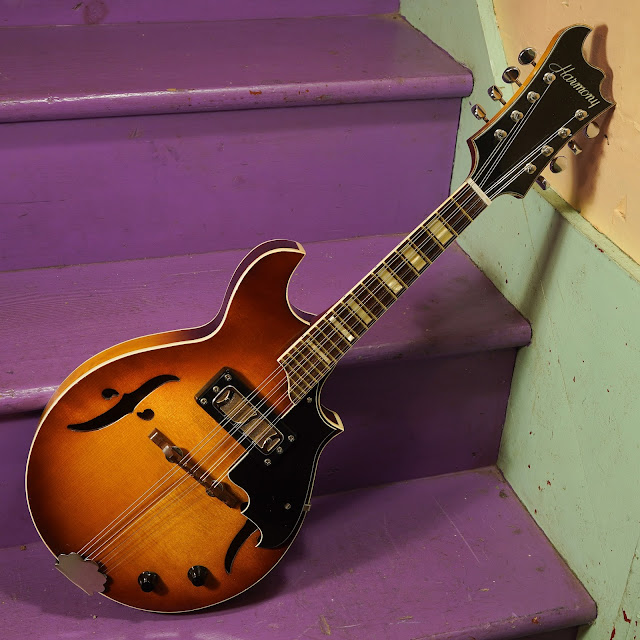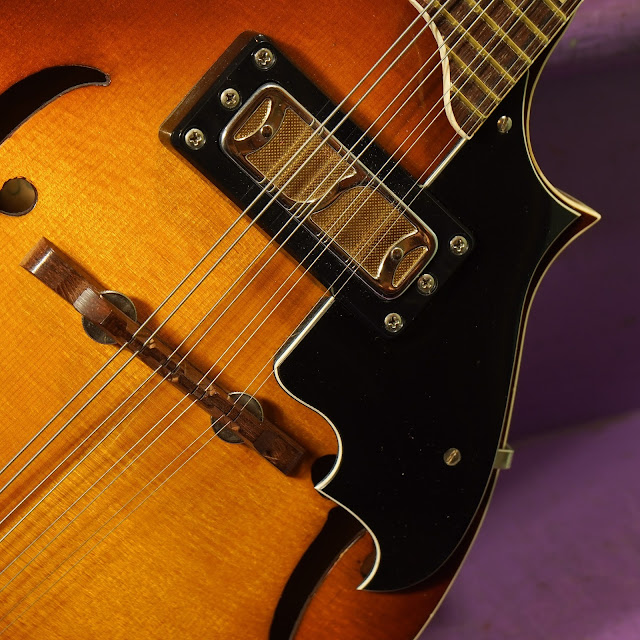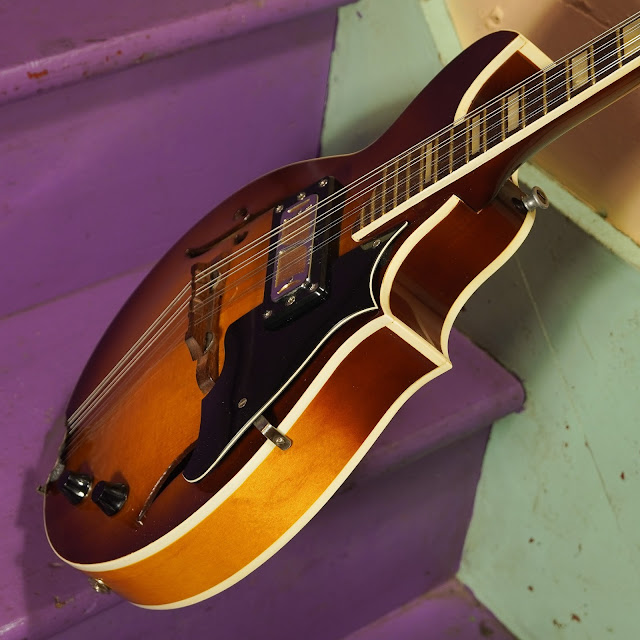1967 Harmony H35 "Batwing" Electric Mandolin
I haven't seen one of these in a while! ...and this one's clean and all-original, to boot, save for the strap buttons and tailpiece ground-wire I added to it. This is a cool thing, though, folks. These are hot-sounding and a bit twangy and crunchy when plugged-in. Their acoustic tone is so-so, however, so I think of these really as electric mandolins despite the fact that the body is made from entirely solid woods.
This one belongs to a local customer and my work was just "glorified setup" stuff. Post-repairs it plays fast and easy and -- remarkably -- balanced when plugged-in. Too-hot A-course strings are typical for "bar magnet" pickups like the DeArmond-made unit on this guy, but in the case of this instrument the string-to-string volume response is pretty even.
I can easily see why this model (its designation is H35 on this '67 model but changes to H835 on '70s models) is popular for blues-mando players, though. The single-coil pickup is hot enough that it drives amps easily and that, combined with maybe a 5-10w amp that can push into drive fairly quick, would make this a saucy little devil in the right hands.
Repairs included: fret level/dress, cleaning, ground wire added from tailpiece to harness, setup.
Body wood: solid spruce (press-arched) top and solid maple back/sides
Bridge: rosewood adjustable (original)
Fretboard: rosewood
Neck wood: maple
Pickups: 1x DeArmond "goldfoil" single coil
Action height at 12th fret: 1/16" overall (quick)
String gauges: 36w, 24w, 15, 10
Neck shape: medium soft V
Board radius: flat
Truss rod: non-adjustable
Neck relief: hair of relief ameliorated during level/dress of the frets
Fret style: medium-low brass
Scale length: 13 7/8"
Nut width: 1 3/16"
Body width: 10 1/8"
Body depth: 1 7/8" + arching
Weight: 2 lbs 12 oz
Condition notes: it's clean and all-original throughout though there are a couple of stable hairline cracks in the top near where the tailpiece is mounted. The neck came in with a mild warp at the "extension" over the body. This is really common on bolt-on necks due to tension putting a lot of stress at that point in the neck. I forgot to mention that it has decent 18:1 ratio tuners. The bridge design on Harmony arched instruments is a bit flawed as the "wheels" work backwards compared to other makes and so the shafts push-up into the "saddle" bit. This means the saddle has a tendency to rock-around during tuning so it's good to keep an eye on it now and then.
















Comments